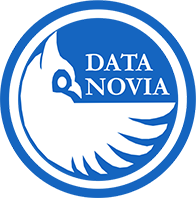Introduction
R is a powerful language designed specifically for statistical computing and data analysis. Its extensive ecosystem of packages and tools makes it an ideal choice for data science projects. This tutorial is tailored for beginners and will guide you through installing R, setting up RStudio, writing your first scripts, and exploring the advantages that make R a popular choice among data scientists.
Installing R
Before you can start using R, you need to install it on your computer.
Download R:
Visit CRAN (The Comprehensive R Archive Network) and download the appropriate version of R for your operating system.Installation:
Follow the installation instructions provided on the CRAN website. The process is straightforward on Windows, macOS, and Linux.
Setting Up RStudio
RStudio is the most popular integrated development environment (IDE) for R. It provides a user-friendly interface that simplifies coding, debugging, and data visualization.
Download RStudio:
Go to the RStudio website and download the free version of RStudio Desktop.Installation and Setup:
Install RStudio following the on-screen instructions. Once installed, open RStudio, and you’ll see an interface divided into several panels:- Console: For executing R commands interactively.
- Source Editor: For writing and editing scripts.
- Environment/History: For managing variables and command history.
- Files/Plots/Packages/Help: For file navigation, visualizations, package management, and accessing documentation.
Basic R Scripting
Let’s write a simple R script to familiarize you with the syntax and workflow in RStudio.
Example: A Simple Script
This script calculates the mean of a numeric vector.
#| label: simple-script
# Create a numeric vector
numbers <- c(10, 20, 30, 40, 50)
# Calculate the mean
mean_value <- mean(numbers)
# Print the result
print(paste("The mean is", mean_value))- How to Run the Script:
You can run this script by clicking theRunbutton in the RStudio Source Editor or by highlighting the code and pressingCtrl + Enter(orCmd + Enteron macOS).
Results:
[1] "The mean is 30"Advantages of R for Data Science
R offers several key benefits that make it ideal for data science:
Specialized Statistical Packages:
With packages like ggplot2, dplyr, and caret, R provides advanced statistical and graphical techniques out-of-the-box.Data Visualization:
R is renowned for its data visualization capabilities, enabling the creation of publication-quality plots.Reproducible Research:
Tools like R Markdown and Quarto allow you to combine code, output, and narrative, promoting transparency and reproducibility in your analysis.Community and Resources:
R has a large and active community, meaning extensive documentation, tutorials, and forums are available for troubleshooting and learning.
Conclusion
By installing R and RStudio and writing your first R script, you’ve taken the first steps toward harnessing the power of R for data science. This tutorial provided an overview of the installation process, environment setup, basic scripting, and the key advantages of R. As you progress, you’ll delve deeper into R’s rich ecosystem of packages and tools to further enhance your data analysis skills.
Further Reading
Happy coding, and welcome to the world of R for Data Science!
Explore More Articles
Here are more articles from the same category to help you dive deeper into the topic.
Reuse
Citation
@online{kassambara2024,
author = {Kassambara, Alboukadel},
title = {Getting {Started} with {R} for {Data} {Science}},
date = {2024-02-10},
url = {https://www.datanovia.com/learn/programming/r/basics/getting-started-with-r-for-data-science.html},
langid = {en}
}
